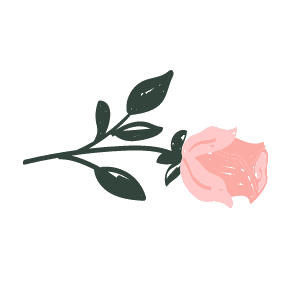The rose is more than an ornamental plant. It is a nice living organism that carries a bouquet of beautiful roses to smell of fragrance in gardens and roads. It is used to express love, sadness, and solidarity. It includes red, yellow, white, and an endless ladder of degrees, to which new hybrids are added every day. They differ among themselves in terms of flowering time, length of period, color, shape of leaves, length of the bush and its tolerance to different environmental conditions, and these hybrids and others produced from ornamental plants are generally the result of long and arduous research. Such as Britain, the Netherlands and Eastern European countries. The rose is a standing or climbing shrub plant. It is found wild in most regions of the world except for the tropical ones.
It tolerates drought and low temperatures to (-40) degrees Celsius, as in the province of Alberta in Canada.
The flowers are single or in clusters, multi-colored, the leaves are serrated, often lanceolate,
It is a perennial plant that does not need to be replanted. It blooms within a year of cultivation. The duration of flowering varies according to the cultivar. Likewise, the duration of its life in vases after picking varies according to care.
And treatment after picking, also depending on the cultivar.
The use of roses:
It is used in the manufacture of juice, jams, perfumes and rose water.
It is frequently used in landscape and engineering landscaping.
It is also used in nurseries and greenhouses as a picking crop.
Date of cultivation of roses:
The history of rose cultivation goes back thousands of years, and excavations have shown that it existed thirty-five million years ago.
It began to be cultivated in China five thousand years ago, and it was found in Egyptian tombs.
There are 150 species of roses spread all over the world.
It became a symbol for many British families and armies, until a war broke out in the fifteenth century called the “War of the Roses”,
In the sixteenth century, roses were used to barter the price with them as a result of their high cost, and then its cultivation flourished in the Netherlands, which was exporting roses in ships in the Renaissance era.
And as soon as the eighteenth century arrived, the seeds began to be used in the cultivation of roses, in addition to the method of propagation by stem cuttings, which was widely used at the time.
In the nineteenth century, Josephine, wife of Napoleon, embraced and pampered roses. Her favorite garden was the Château de Malmaison, seven miles west of Paris, in which she planted her precious roses!
Types of shrubs:
Of the roses, what is my shrub
It grows upright on one leg and gives either large, multi-petaled cut flowers,
Or it may not be suitable for picking and its flowers with a single row of petals are used for landscaping in the form of basins.
and what is dwarf,
Its stem is short, it is characterized by weak vegetative growth, and its small flowers continue to bloom almost throughout the year.
It is used for planting on the sides of paths in gardens.
Also, climbing roses.
Information about roses roses.jpg
Vigorous growing, hybrid used to cover columns, land rounds, roadsides and paths in gardens and entrances.
And roses have suitable conditions for growth, the first of which is the temperature that determines the success of planting roses.
Temperatures :
The optimum temperature is sixteen degrees at night, and twenty to twenty-eight degrees during the day.
Its height leads to burning of the leaves and wilting, and its decrease weakens growth.
In terms of humidity, it should not be less than seventy to eighty percent, and an increase in it leads to infection with fungal diseases, and its deficiency leads to wilting and dehydration.
the light :
Roses are neutral in relation to the length of the lighting period, meaning that they need moderate light.
The period of exposure to the sun must not be less than six hours per day, and the production and growth increase by increasing the lighting period.





